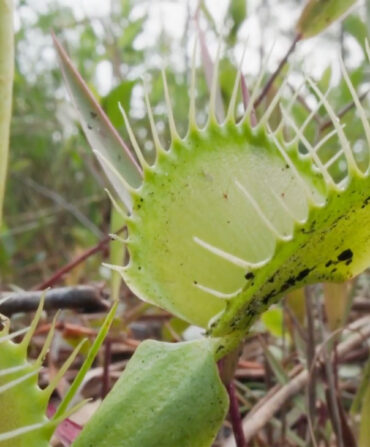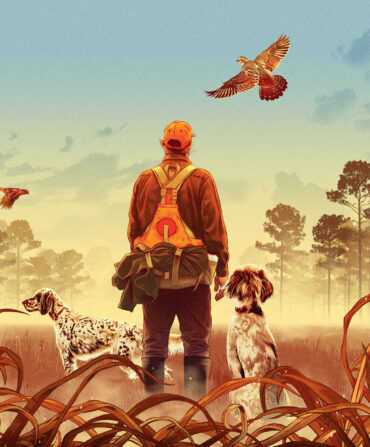Sporting
Into the Heart of the Everglades
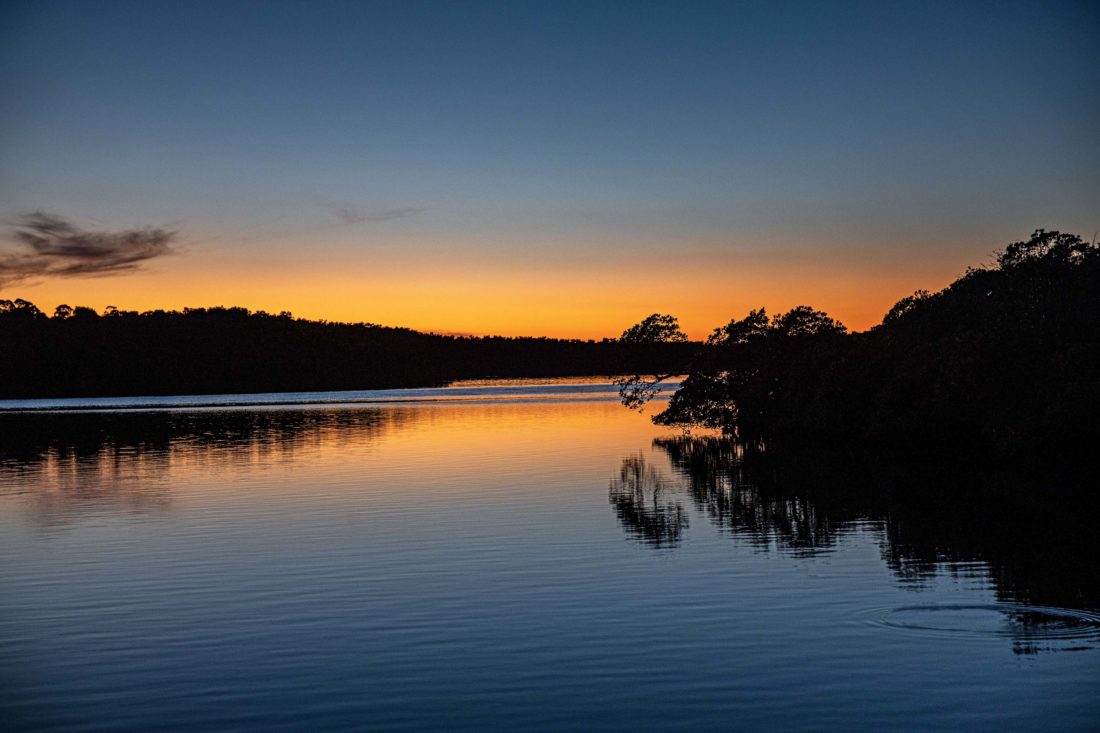
Photo: Tom Fowlks
I cast toward the red mangroves, as close as I can get, as close as I dare. The stilt-legged shrubs form a curtain of chaotic, braided roots capped with dense green foliage, a towering, vernal wall between the Gulf of Mexico and the Florida peninsula. To the north, farther up the Florida mainland, the Everglades’ famed River of Grass unfurls to the horizon. But as the fresh water moves toward salt, the grass peters out and the mangroves close in. Labyrinths of narrow passages wind through their warrens. Mangroves that can soar sixty feet above the water ring wide bays. And wherever they grow, their intertwined root systems give purchase to sand and muck and harbor snook, tarpon, sharks, and manatees. Here on the far southern margin of Florida, the mangroves hold the world together.
Whoops. Too close. The fly hangs up in an arthritic kink of a mangrove branch, six feet above the water.
“Squirrel fishing,” I say, red-faced. “Not everybody knows how to do this.”
Captain Chris Wittman laughs and sets the push pole to turn the skiff toward the dangling fly.
“That is a unique talent,” he says with a smile. “And now that I know you can do that, maybe you should try something different.” Which makes sense. Doing something different is why we’re here in the first place.
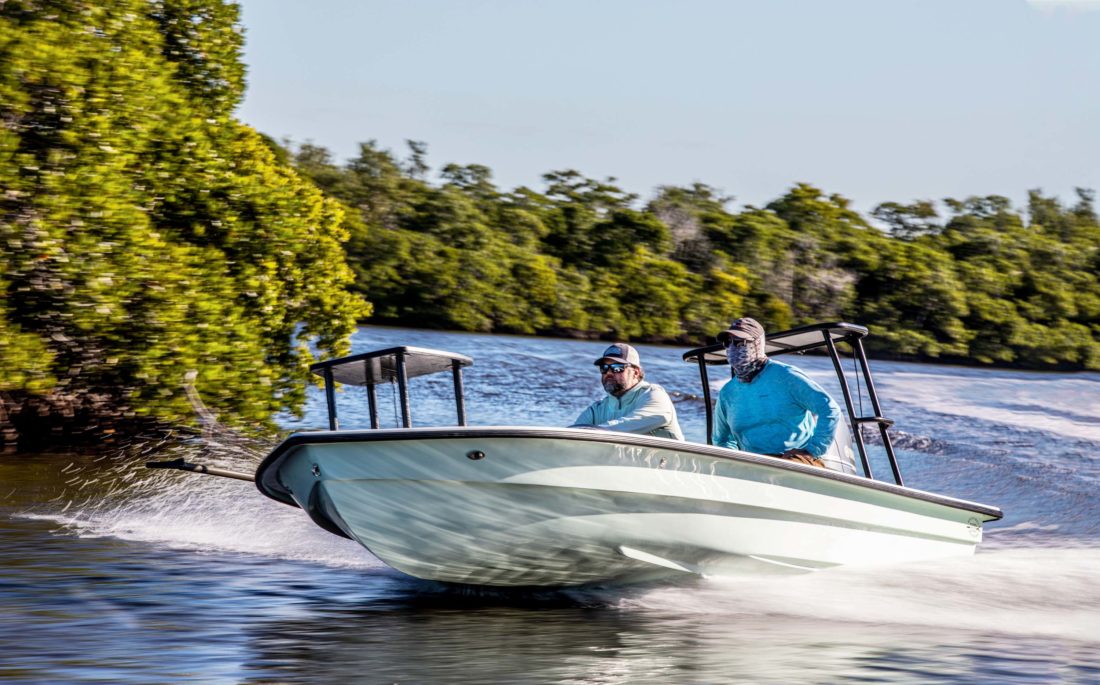
Photo: Tom Fowlks
A fishing run in a flats skiff.
We’d left the remote Everglades outpost of Flamingo two days earlier, in a Hell’s Bay flats skiff groaning with a very un-flats-skiff-like load: tents; sleeping bags; jungle hammocks; two coolers stuffed with steak, sausage, and moose backstrap; camp stoves; five gallons of drinking water; and enough fishing tackle for a month. We’d be on the water for a four-day bite out of the Wilderness Waterway, an epic ninety-nine-mile expedition trail typically traversed by kayak or canoe in a ten-day journey from Everglades City to Flamingo. Seated in the seventeen-foot skiff, its motor whining and rooster tails peeling out from behind the boat, I feel like I’m cheating just a bit. But our plan of making hours-long exploratory fishing runs from the route’s elevated camping platforms, called chickees, demands a different set of tools than a double-bladed kayak paddle.
These days, an international spotlight shines on the Everglades, which are suffering from an array of ills as tangled as those mangrove roots. Florida’s natural water flows have been so extensively ditched, canalized, and diked that hydrologic processes across much of the state are no more natural than the plumbing under Manhattan streets. The life-giving pulses of fresh water that have for millennia fed the Everglades have become polluted and strangled, and an ecosystem lauded for its natural beauty and wildlife is now among the most human-impacted, conflict-spawning waterways on the planet. There are many champions of a more natural Florida, fighting from north of Orlando to the Keys. Wittman is in the ring for many of those matches, as the program director of Captains for Clean Water, a group he cofounded with another charter captain, Daniel Andrews, in 2016 after both witnessed firsthand devastation to marine life around their homes in Fort Myers.
Though I’ve followed those issues closely, I’d caught only glimpses of the Everglades’ wilds on daylong fishing charters. A year earlier, on a tarpon trip with Wittman and Andrews, Wittman mentioned that the only way to truly understand the Everglades was to wake up deep in the mangroves, watching the sun rise over vast bays where bull sharks and bottlenose dolphins scatter schools of bait in giant explosions of fins and scales. “We can go in as deep as you want,” he said. Sixty seconds later, we were penciling dates on the calendar.
Dawn comes early in the Everglades. I’m awake before first light, watching stars give way to gray light that changes to blue and then to yellow and gold. I unzip the tent as the first dapples of sunlight wink through the tall mangroves behind our chickee.
Wittman soon has sausage and eggs sizzling on a stove. Coffee perks in an enamel pot. A rare cold front has swept across South Florida—the temperature is an arctic-for-the-Everglades forty-six degrees—so we plan to give the water and the fish some time to warm up. There are any number of good excuses to eat breakfast before you fish, but this one sounds particularly solid. I walk to the edge of the platform, coffee cup in hand, the energy rising inside of me as the golden sunlight edges up the mangroves.
We’re perched stilt-like above the water, not unlike the mangroves themselves, and beyond the platform deck, the variegated landscape of water, sky, and low forest stretches to all horizons. There are some forty designated wilderness campsites inside Everglades National Park; seventeen are chickees. This one is a double chickee, with twinned decks connected by a raised walkway. There’s enough room for two tents, a jungle hammock, stoves, chairs, and the portable outhouse placed by the National Park Service. These platforms are a highlight of an Everglades backcountry trip, and scoring one is the first step in the adventure. (Reservations must be made with the park service no more than twenty-four hours before you start your trip.) The Seminoles and Miccosukees called the structure a chickee, their native word for “house,” but these weren’t exactly homey retreats. Before the Second Seminole War of the late 1830s and early 1840s, these Florida Indians lived in log cabins. But as settlement increased, they were driven deeper and deeper into the Everglades, adopting palmetto-thatched cypress platforms that gave them protection from alligators, cottonmouths, and the U.S. Army soldiers dispatched to force them off the land.
“Warms up fast,” Wittman says as I shed my first layer before breakfast. I’m hoping the fish feel the same way.
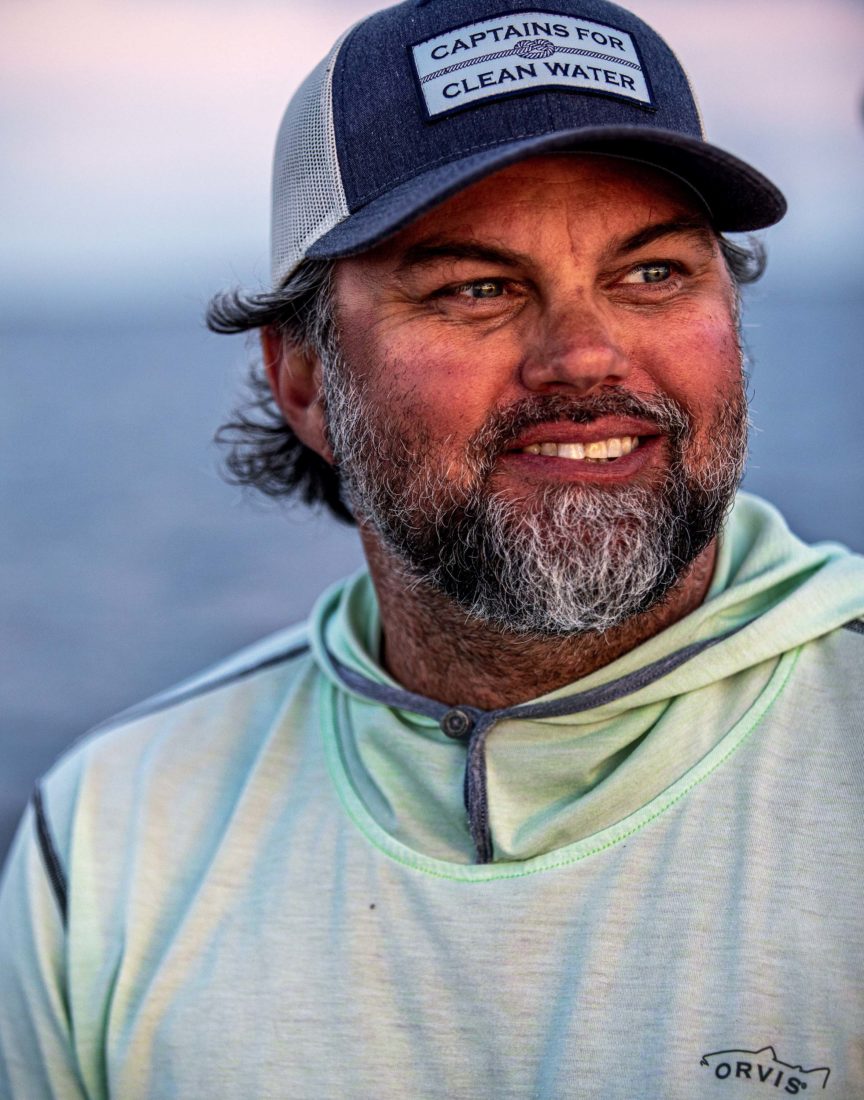
Photo: Tom Fowlks
Captain Chris Wittman, cofounder of Captains for Clean Water.
From the platform we push north, across Oyster Bay, stitched with spume from the rough winds chasing the weather front. I zip up my jacket as a shiver shoots through my torso. The chill, and the scenery, remind me of some far northern waters I’ve paddled, in the Ontario backcountry, the tall humps of mangroves on the shoreline appearing like islands in a sprawling Canadian Shield lake. Although shoreline is a loose term for what you find in this part of the Everglades. A study by scientists at Florida International University found that seas are rising in South Florida nearly three times faster than they had been over the last three thousand years, an issue compounded by the diversion of freshwater flows that carry shore-building sediments. Now encroaching salt water is hounding the mangroves north. The trees are adapted to living in a salty environment, with a membrane in their root systems that blocks most salt from entering, but there’s only so much salt they can take. Like the Everglades itself, they seem to be on the edge of everything, working hard to hang on.
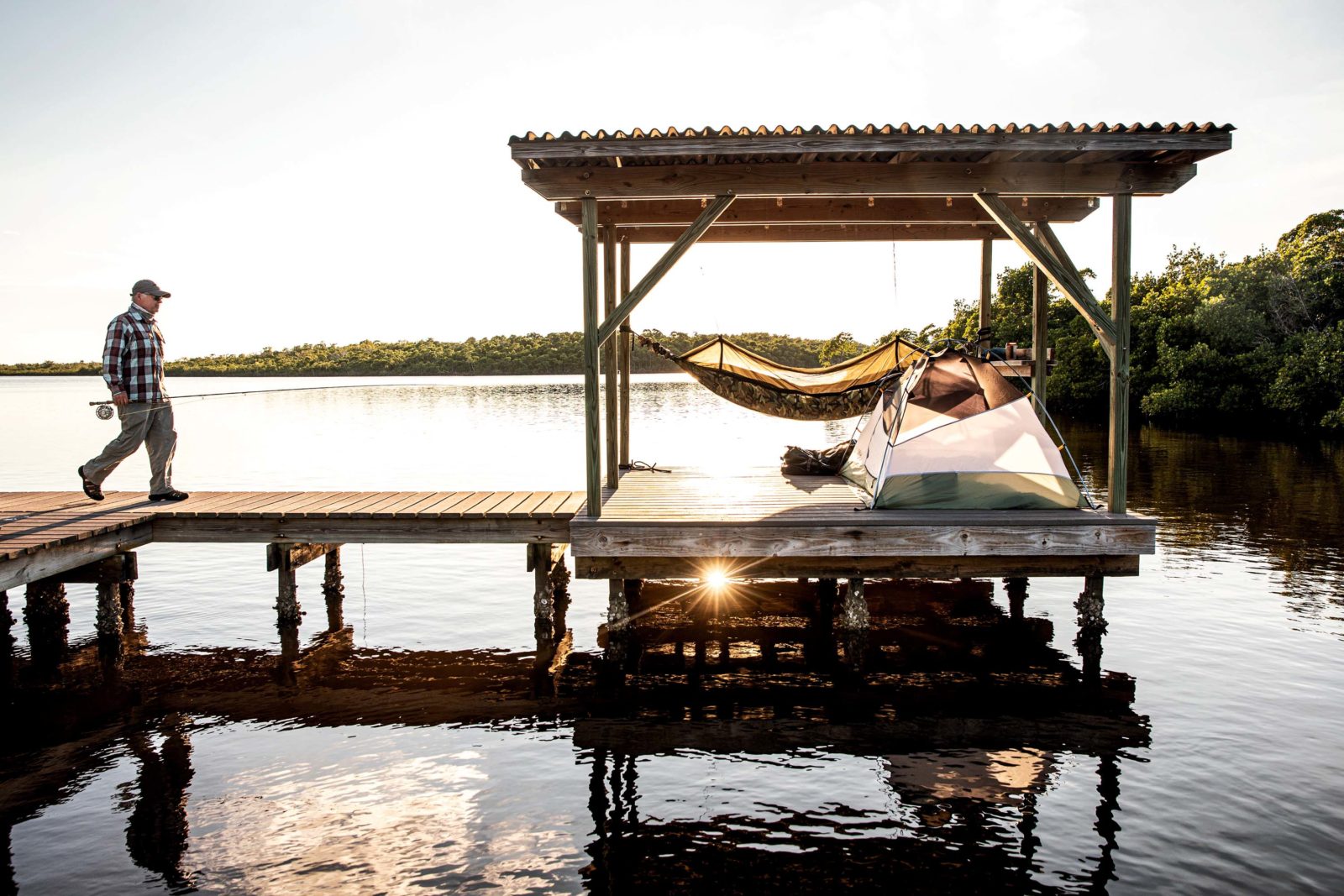
Photo: Tom Fowlks
Camping on a chickee.
In three nights of camping and four days on the water, we are never out of sight of mangroves, and we never find the warm water we seek. Though the cold front has dropped water temperatures below the threshold for tarpon on top and sent big snook skulking into the mud bottoms, other Everglades wildlife is on glorious display. White pelicans gyre overhead. We see alligators, bull sharks, and dolphins that surf in the boat’s wake, and a single crocodile soaking up the sun.
Day by day, I do get a few chances. We blow giant snook out from the muddy bays, the fish nearly impossible to spot in the water churned milky from the wind, but I pick up a dozen-odd small-to-middling-sized snook, willing biters but not much to bend the rod. One afternoon, while we’re poling along a small cove lined with light-colored sand, a zeppelin-like dark shape catches Wittman’s eye.
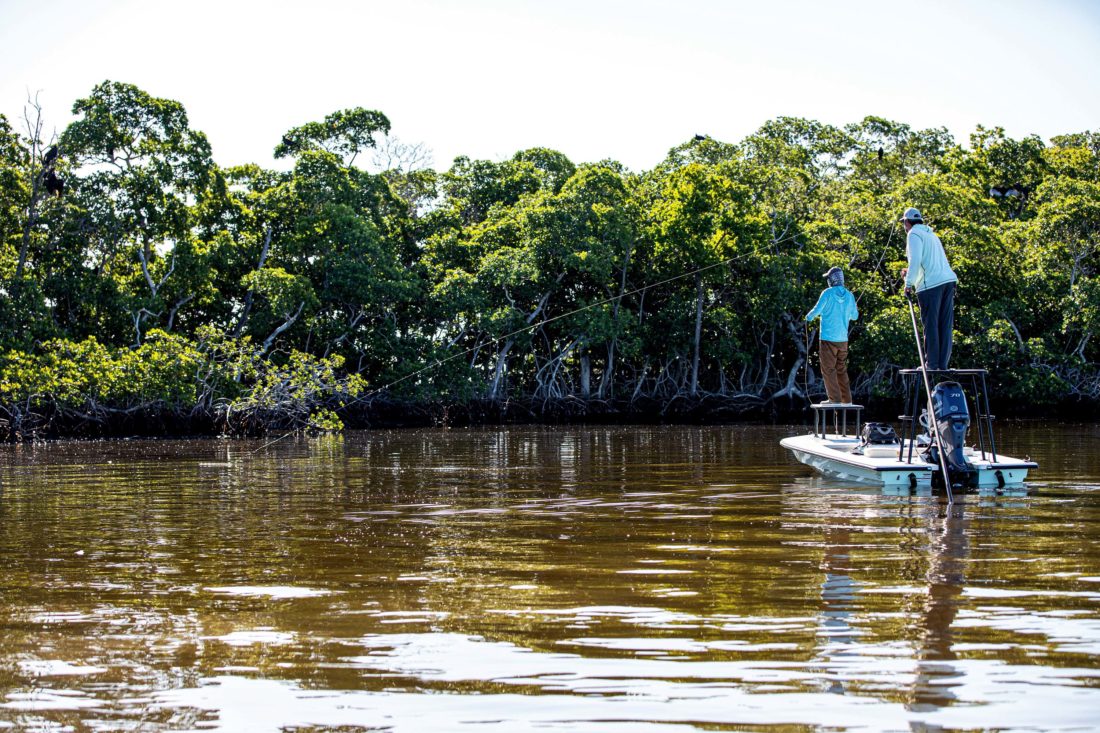
The author works a fly along the mangroves.
“Big snook,” he says under his breath, unwilling to take any chance of spooking the fish. “Really big snook.”
I watch it prowl the outer edge of the mangrove roots. It’s deep, just a darkish smear on the bottom, but it’s a sig-
nificant fish, and a moving fish, which means we have a shot at making it eat.
Wittman plants the pole and twists, gently spinning the skiff for the pursuit. I point to the fish with the rod tip and follow it, afraid of losing the blob in the stained water. Suddenly the fish stops. We hold our breath, worried that the boat’s pressure wave might have alerted it to the chase.
“Wait for it,” Wittman murmurs. “Let’s see if he makes a move.”
But the fish holds in the pocket, which I can now see is the outfall to a narrow channel that fingers back into the mangroves. If it turns into the channel, it’s game over. It’s now or most likely never.
The first cast is short, but the second clears the Scylla and Charybdis of mangroves and falls on the right-hand side of the pocket.
“Yesss, yesss,” Wittman hisses.
The snook’s tail shimmies, and the dark shape arrows toward the fly.
“Striiiip,” Wittman intones. “Striiip.”
And just as the snook closes the distance, it sinks. The blob slowly disappears, the fly tracing a small white contrail over the last of the fish’s shadow.
Whether the fish didn’t like the fly or my retrieve or the angle of sunlight on the water, I will never know. I stand on the casting deck and tell myself the things I want to believe, that after all, I’m not here to rack up fish numbers but to explore and revel in a part of the South I’ve long dreamed of visiting. Myself almost buys it.
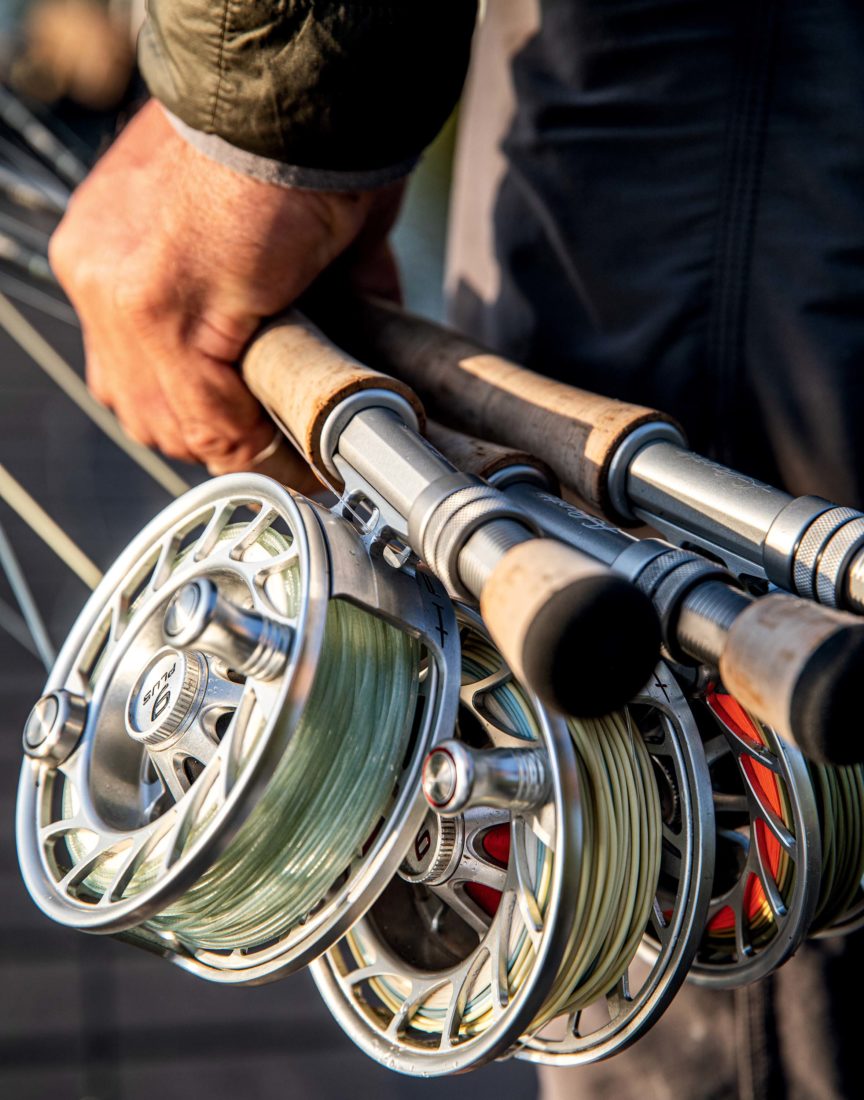
Photo: Tom Fowlks
Saltwater fly rods at the ready.
And truthfully, a big snook refusal isn’t my most salient memory of the trip. The next day I would log the kind of unforeseen moment that lodges as much in the spirit as the mind.
After breaking camp at another chickee the next morning, we strike out down the serpentine Joe River, across Whitewater Bay, and into the tangled matrix of creeks and narrow passages of Hells Bay. At one point we pass a narrow cleft in the mangroves at full throttle, a shimmer of open water that tunnels deep into the green canopy. Suddenly Wittman slows the engine.
“What’s that?” he asks, his voice nearly carried away by the motor and the wind. “Did you see that?”
The aperture looks little different to me than a hundred other openings we’d zoomed past at hat-turned-backward speed, but Wittman is intrigued. “I’ve never seen that creek before,” he says. “Let’s check it out.”
He raises the motor and poles the skiff into another world. Tendrils of mangrove rootlets hang down like curtains of Tarzan vines. Every few dozen yards or so the creek opens wide enough to fire off a cast, but soon the forest is so tight that fishing isn’t an option. “I wonder if anyone’s ever been in here,” Wittman says, as much to the needlefish darting through the roots as to me, seduced by the prospect of discovery.
That it’s even a possibility is a thrilling thought. The passage chokes down ever more tightly until we lie on the skiff floor, pulling the boat under mangrove branches, hand over hand, their knotted fingers scraping against the hull. The boat’s disturbance stirs up miasmic plumes of sulfur and decay, life and death as the ever-present symbionts of the mangroves. I brush away spiderwebs, and pull. Without knowing where we’re going, or how far we intend to go, we push as deeply as we can into the Everglades. Then we catch our breath, and push even deeper.
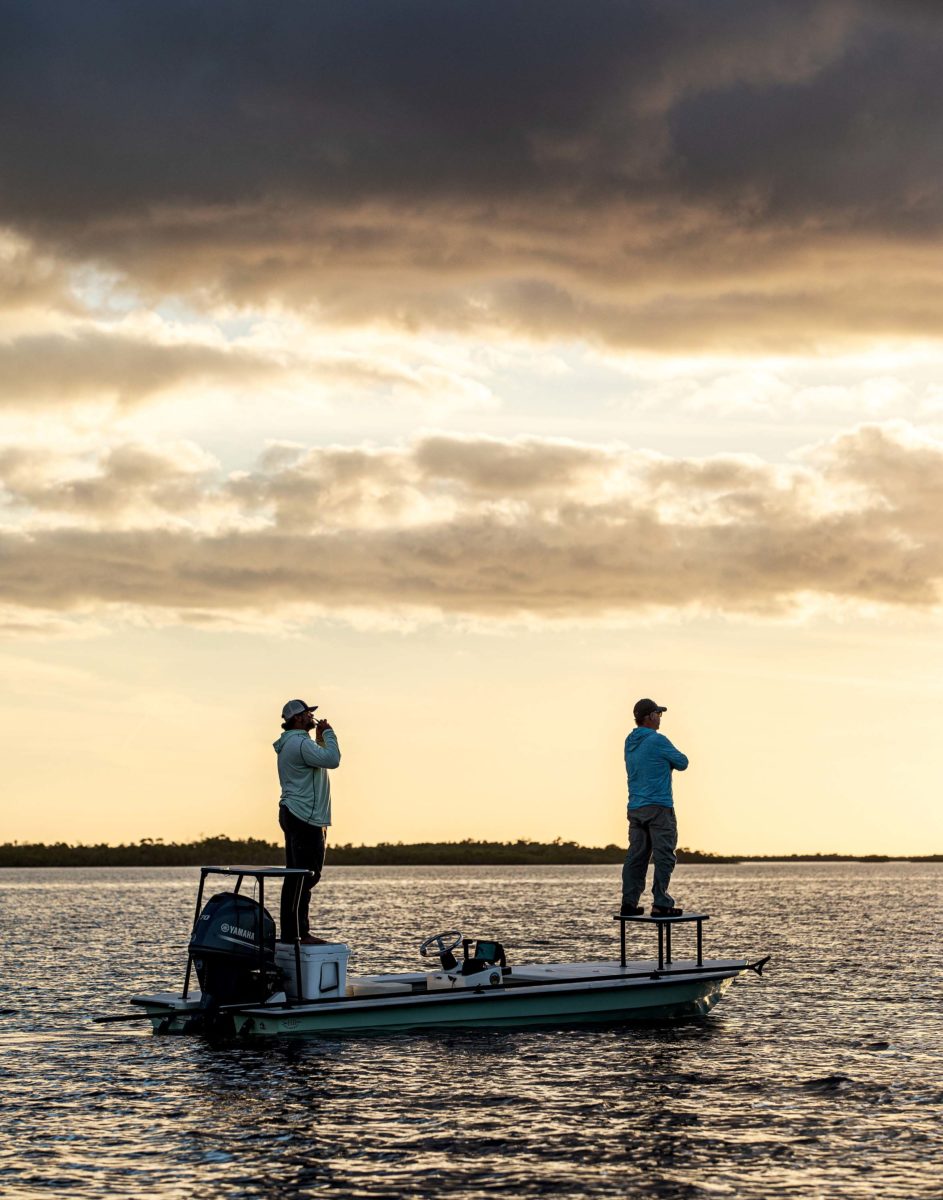
Photo: Tom Fowlks
Scanning the water in the last light of day.


